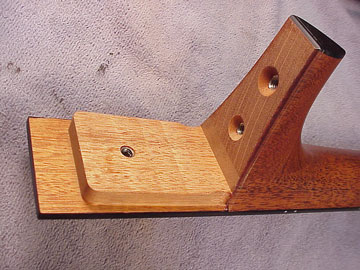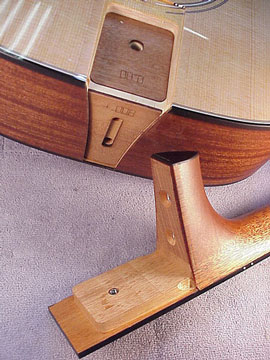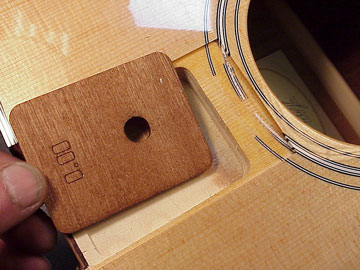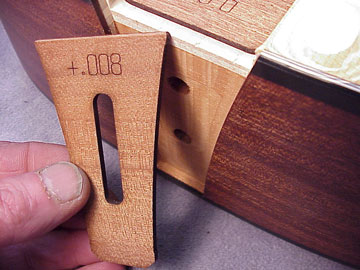Taylor's New Neck Joint
© Frank Ford, 5/12/99; Photos by FF
Bob Taylor is an unusual fellow. As soon as he comes up with a really cool method or process to improve his guitars, he shares it openly with other guitar makers, including his biggest competitors. This is pretty strange behavior, considering that the leading manufacturers in most industries try to keep any proprietary method a big secret so they can stay ahead of the others.
It's been a long time since Bob Taylor was an young guitar maker building instruments one at a time. Now, he's an industrialist. His factory employs hundreds, and makes thousands of guitars every year. Through all the growth that has brought the company this far, Bob has never lost sight of an important guiding principal: Every time you increase production, you must also make a significant increase in quality.
When we hear of a manufacturer upping production, our gut reaction is to presume that quality will drop and service will go out the window. You know, the same stuff we all hate about bank mergers. But not so with Taylor. When they moved into their new factory, we wondered where they would find room for improvement in the guitars.
Well, here's where they found something to do:

Right at the old neck joint.
First, let me give you some background. Guitars are made of two major parts, the body and neck. How you stick those two parts together has become something of a controversial topic, thanks to one Bob Taylor. He founded Taylor Guitars with the idea of bringing innovation to the methods of construction of a traditional instrument. Specifically, he popularized the concept of bolting the neck to the body rather than gluing it on.
A bolted neck can be removed easily for repair. It's simple as that, and because guitars change over time, it eventually becomes necessary to remove and realign the neck to correct for eventual changes in the shape of body as a result of string tension. At a time when all the big manufacturers of quality guitars were using a glued dovetail joint, Taylor bolted his necks on. The success of Taylor instruments has certainly proven that a bolted neck is a solid concept! In fact, it's now considered by many, if not most guitar makers to be a standard neck attachment method because it's easier to do, works as well, sounds as good, and facilitates repair.
Now Bob's attacking this area from a new perspective. Having licked the neck attachment issue, he's actually looking at the "tongue" of the fingerboard that sits on the top of the guitar. Here's the problem. You get the neck aligned correctly to the body, but the end of the fingerboard may not be in a direct line with the rest of the neck. Sure, you can correct for that during manufacture, and most builders do just that.
But, what about later, as the guitar ages? The neck pulls upward at the body, eventually reaching the point where it needs to be reset to the original angle. Then, you remove the neck, change the angle, and reinstall it. Oops! The fingerboard still has to be glued to the top of the guitar. You can shim it up if it appears to "droop" at the body, or you can just leave it that way. After all, playability above the 14th fret isn't that big a deal, right?
In generations past there have been any number of patented attempts to resolve this issue with guitar necks that pivot at the body, with elevated reinforced fingerboard extensions which move with the rest of the neck. All these methods had one big flaw. They looked funny, and they looked (or were) unstable.
Now, look at Bob Taylor's new neck joint:

I've laid a mirror inside this guitar so you can see the single bolt under the end of the fingerboard. The label, upside down because you're seeing it in the mirror, hides the bolts that hold the neck in place.
Here's the neck, off the body:

Notice that the end of the fingerboard is supported through its entire length by an extension of the mahogany neck. In fact, the entire length of the neck, from nut to 20th fret is made from the same piece of wood to ensure stability.
This is where it fits on the body:

The end of the neck is mortised into the sides of the guitar, and the end of the fingerboard is mortised into the reinforced top.
Lets look closer at the mortise, because it's a big deal:

The end of the neck is mortised into the sides and neck block. The end of the fingerboard and its extension support are mortised into the top.


